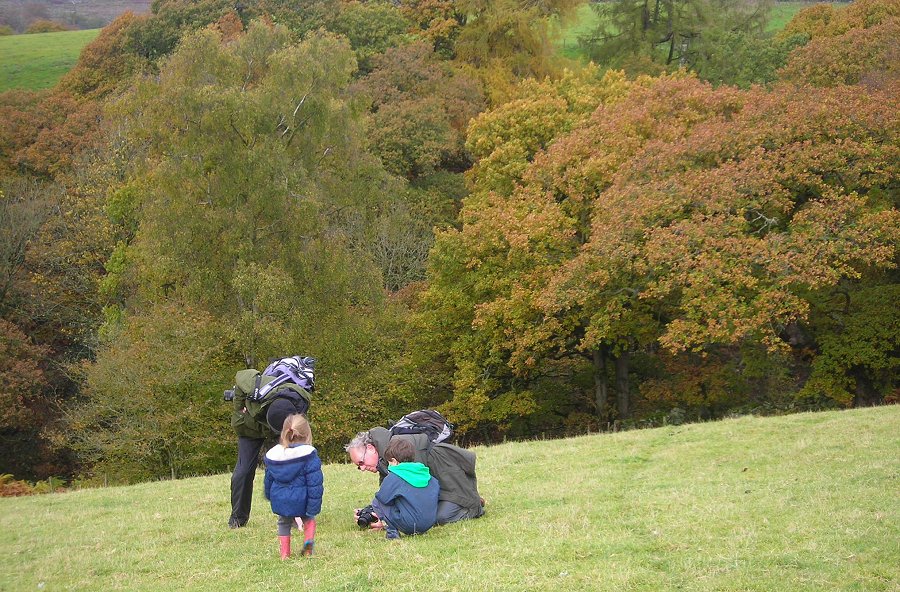
Back to the Home page
(Species lists below)

We returned to Hodgebeck again this year as it was so amazing last year, and although there were fewer fungi this time we still found many interesting things. The weather was kind after so much rain recently, and twelve of us including two children made our way down across sheep fields into the valley. Last year we marched across these fields down to the river but this time David Miller urged us to linger down one of the slopes and look for waxcaps as he knew it was less heavily grazed and he was so right!! (Thank you for that.)
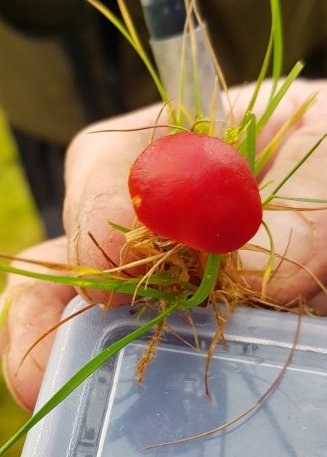 Scarlet Waxcap Hygrocybe coccinea |
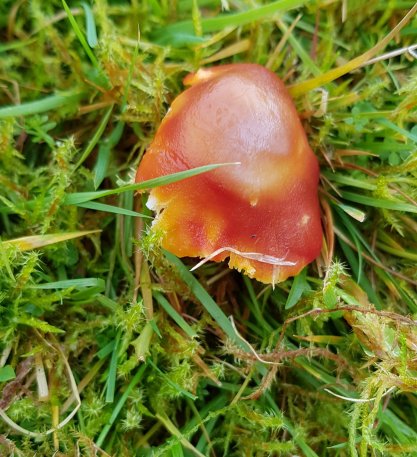 Crimson Waxcap Hygrocybe punicea |
We found two red species Hygrocybe coccinea and the larger Hygrocybe punicea, the yellow species H. chlorophana and masses of the chunky apricot and white species Hygrocybe pratensis. There were lots of whitish waxcaps and after much discussion we came to the conclusion we had the little white striated Hygrocyvbe virginea as well as the pale version of the Hygrocybe pratensis (Hygrocybe pratensis var pallida). In addition there were lots of Parrot waxcaps Hygrocybe psittacina in all shades of yellow and pink but always with a touch of GREEN. All highlighting that frustrating fact that fungi change their appearance due to their age and the weather conditions. The children were a great asset in finding all sorts of fungi everywhere as they were far more agile and keen sighted than the rest of us! Nicholas found a magnificent black Entoloma with a pimple on the cap which I still have been unable to identify.
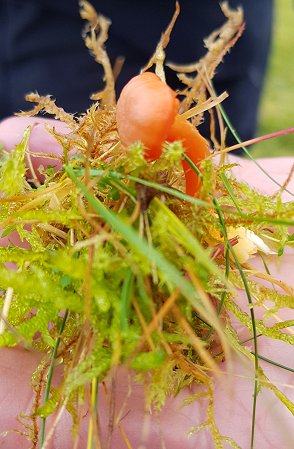 Spangle Waxcap Hygrocybe insipida |
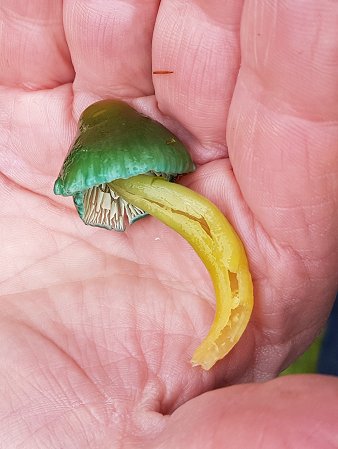 Parrot Waxcap Hygrocybe psittacina |
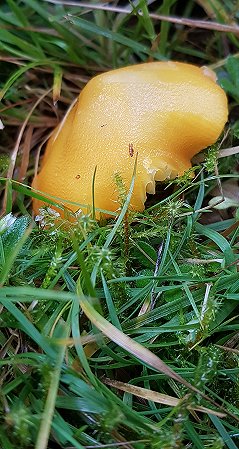 Golden Waxcap Hygrocybe chlorophana |
We walked up through the oak woodland and saw lots of Common Earthballs Scleroderma citrinum though none of them had the parasitic bolete growing on them this year and neither were there any of the huge white funnel-shaped Lactarius vellereus that we saw last year. However I did see a couple of those the following week with the North East fungus group. We also found the black Russula with its parasitic Silky Piggyback fungus Asterophora parasitica. We then strode boldly up through wet bracken and came out at Stork House where we were amply rewarded with a fine view up Bransdale and a field of Earth tongues! These are quite scarce, being restricted to short wet mossy turf so I for one was very excited. They have the most amazing spores and I identified Geoglossum fallax with its 13 septa (see photo below(. However Mel Greaves the following week reckoned there were at least two other species among the collection and one may even be a new species!! So all in all a good, if grey, foray!
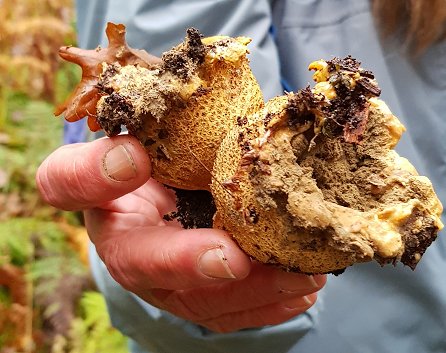 Common Earthball Scleroderma citrinum |
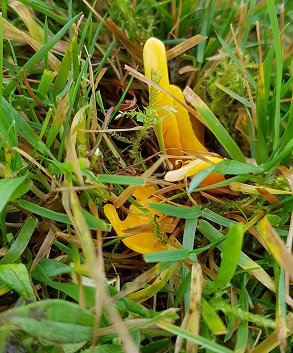 Handsome Club Clavulinopsis laeticolor |
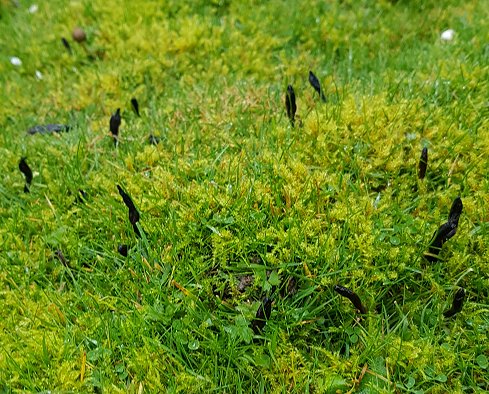 Earthtongues Geoglossum sp. at Stork House (above) Detail of G. fallax (right) and spores (below) |
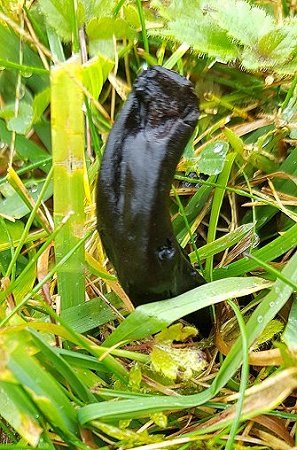 |
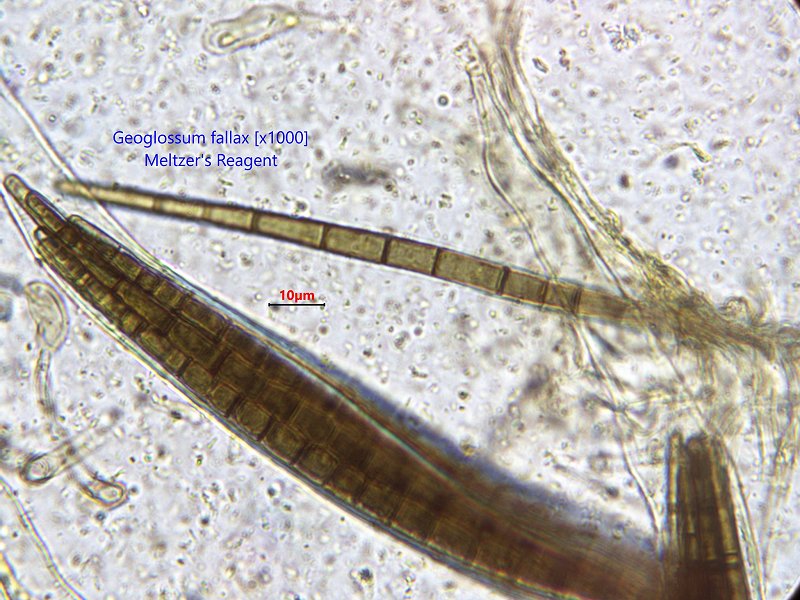
Geoglossum fallax spores seen through the microscope – photo by John Sutherland.
[Ed: Here are a couple more species – photos by Nicola Woosnam.]
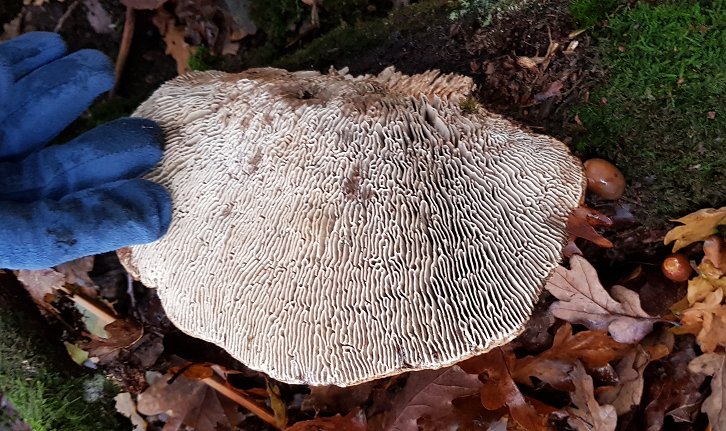
Oak Mazegill Daedalea quercina
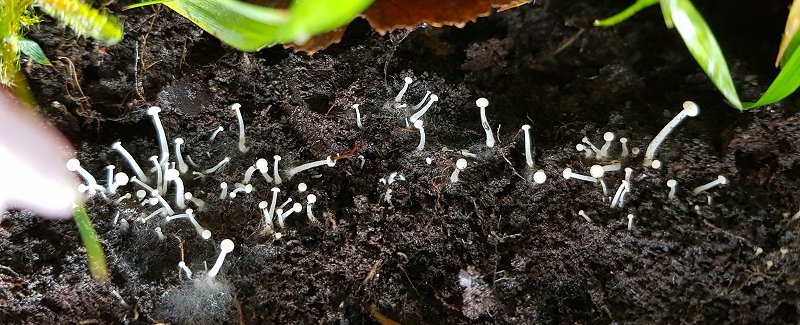
Oak Pin Cudoniella acicularis
(This list might be updated in future.)
| © Ryedale Natural History Society 2019. Photos © Nicola Woosnam, John Sutherland and Gill Smith 2019 |